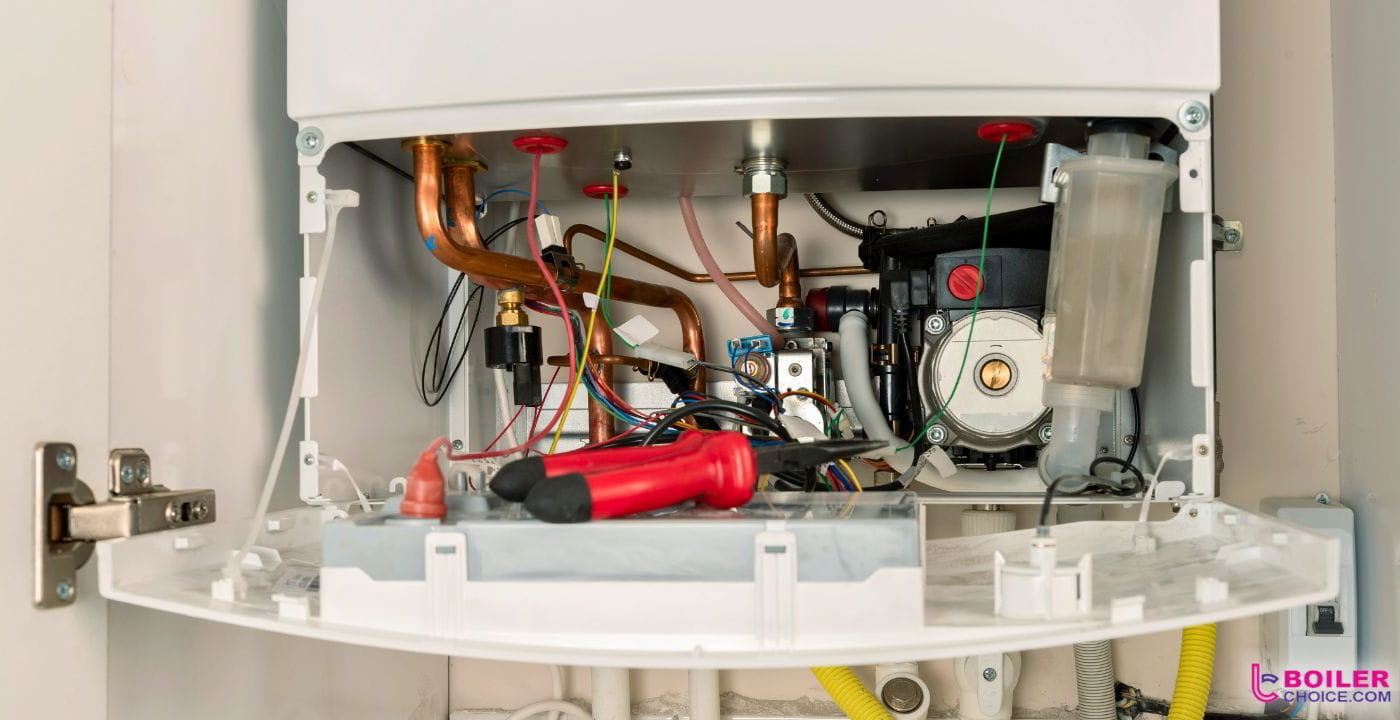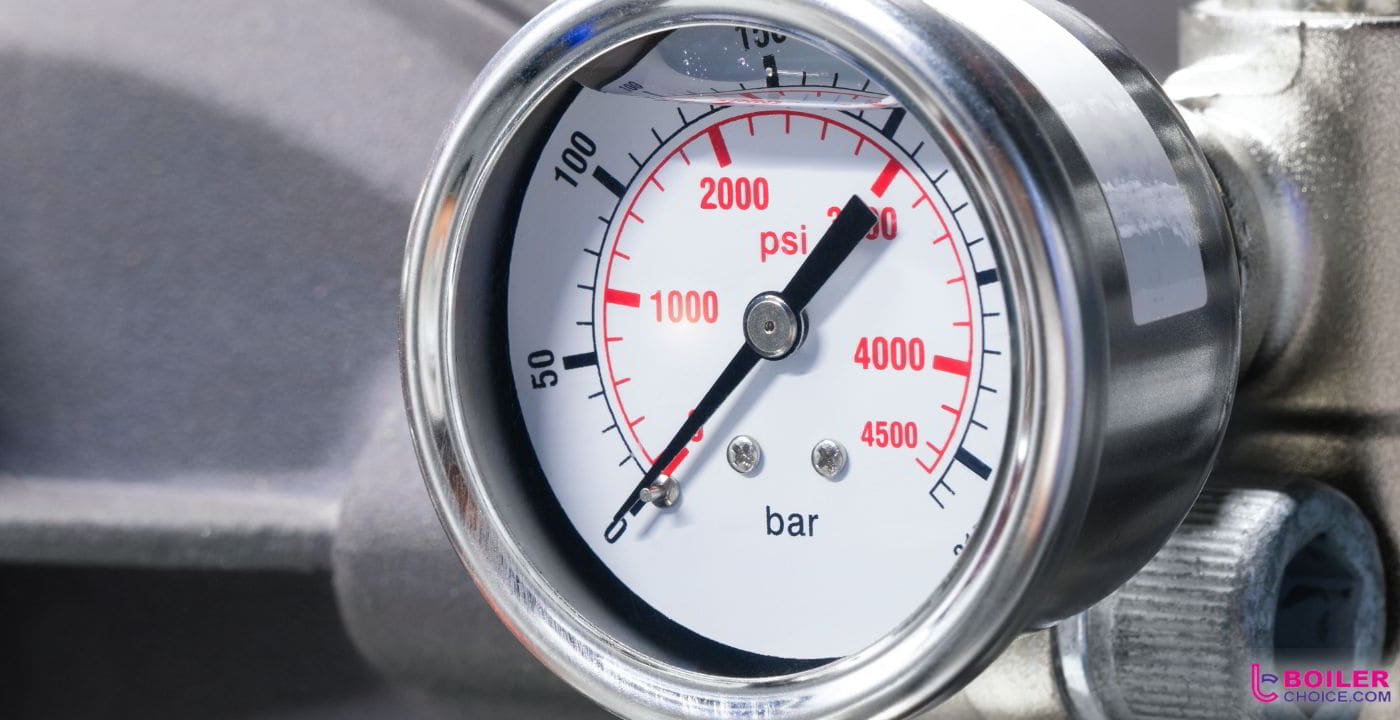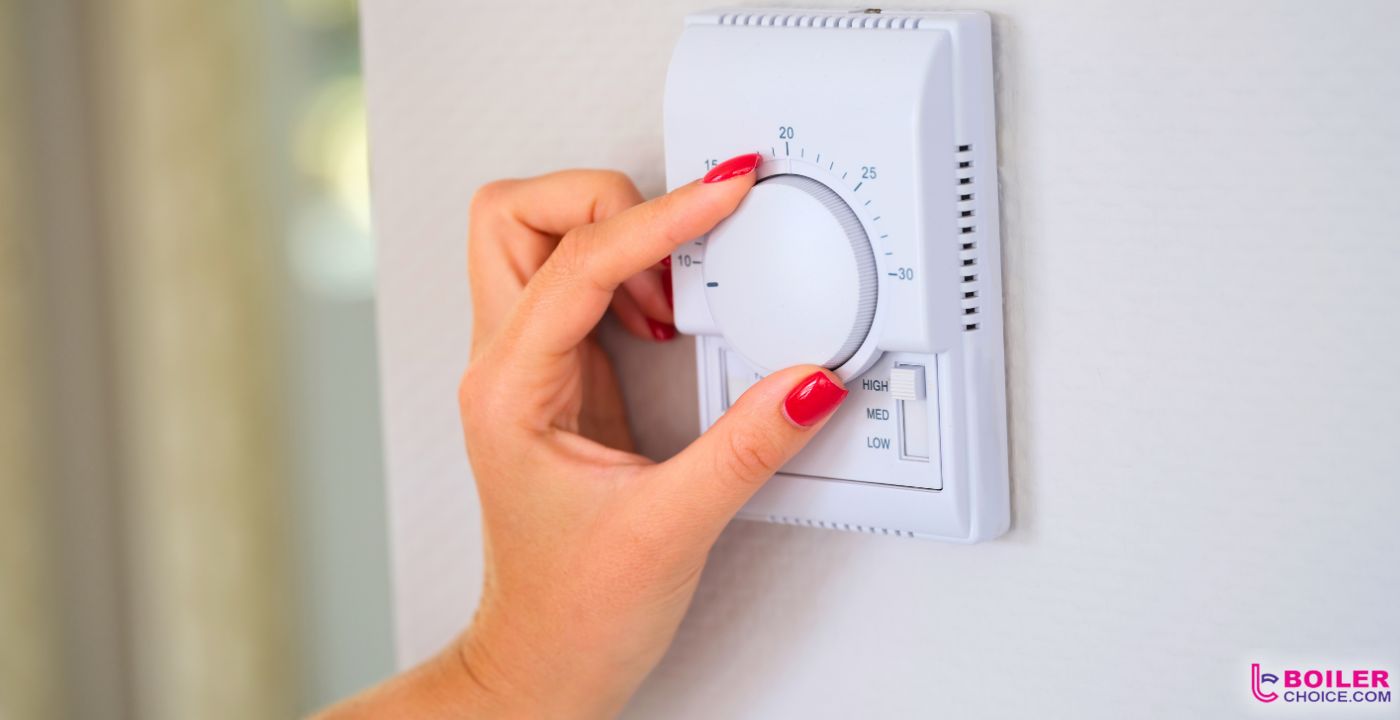
Vaillant is one of the world’s leading boiler manufacturers, having been in operation for almost 150 years; as with all boiler brands, however – even the very best – Vaillant boiler problems are not unheard of. Fortunately, most of the problems experienced by Vaillant boilers are fixable, either at home or, more often, by a certified Boiler Engineer.
With that in mind, we’ve put together this troubleshooting guide to help identify the most common problems faced by Vaillant boilers, and whether you can tackle the problem yourself, or will need to call someone in. With winter fast approaching on the horizon, being familiar with your boiler (and any problems it might have) will save you a lot of hassle should one of those issues arise. So, read on!
1. Vaillant Boiler Low Water Pressure
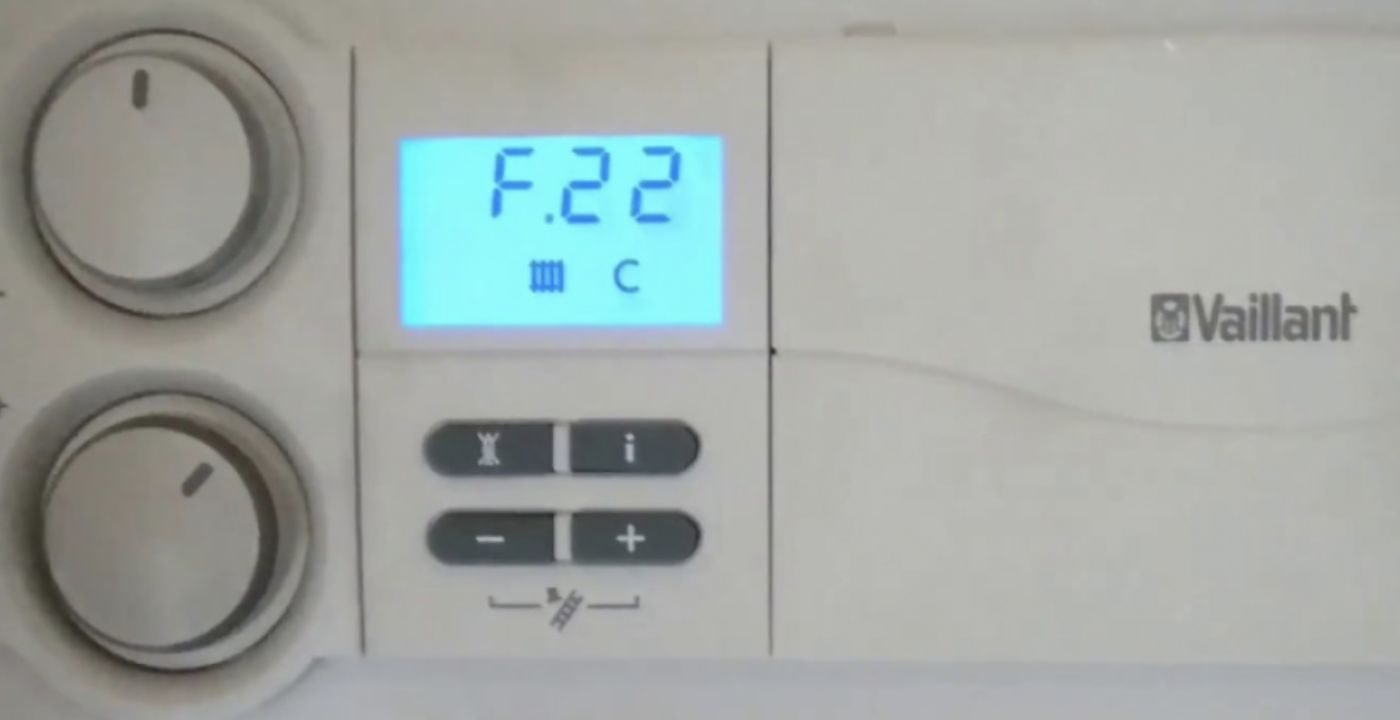
The F22 error on a Vaillant boiler indicates that the water pressure is too low. When the pressure in the boiler drops too low, the water in the radiators and the shower won’t get warm. You might also see a red light on the display board. This is just a reminder that the boiler isn’t firing correctly.
There are two primary causes for a decline in boiler pressure: a leak in the system (which reduces the amount of water in the system and, in turn, the pressure) or a bleeding radiator. A digital or analog indicator on the boiler’s control panel will show the water pressure. Normal boiler pressure should be around 1.5 bar or more.
Troubleshooting:
Each boiler has a distinct feature, and the instructions will alter slightly based on the model. But in general, the following steps can be taken to repressurize the system in the event of a drop in boiler pressure:
- Make sure the boiler is turned off. Before any maintenance can be done on the heating system, it must cool down completely.
- Inspect the boiler’s filling loop. It’s essential to check the filling loop and ensure that it’s securely fastened on both ends, as a leaking filling loop is a common source of pressure loss in a boiler. This is usually a silver connection between the utility company’s mains to the first stage of the heating circuit. There will be a control valve on one end and an isolation valve on the other.
- Use a flathead screwdriver to rotate the isolation valve counterclockwise until the valve’s line is perpendicular to the pipe.
- Turn the valve’s handle counterclockwise. The system’s pressure can be restored by allowing water to circulate freely.
- Keep an eye on the pressure gauge. As the handle valve is turned, pressure should build up in the gauge. Whenever the water reaches the level specified by the manufacturer of your boiler, turn it off.
- Fire up the boiler and double-check to ensure it’s operating correctly. To function normally, the pressure in your Vaillant boiler should be at least 1.5 bars or more.
2. Vaillant Boiler Not Firing Up
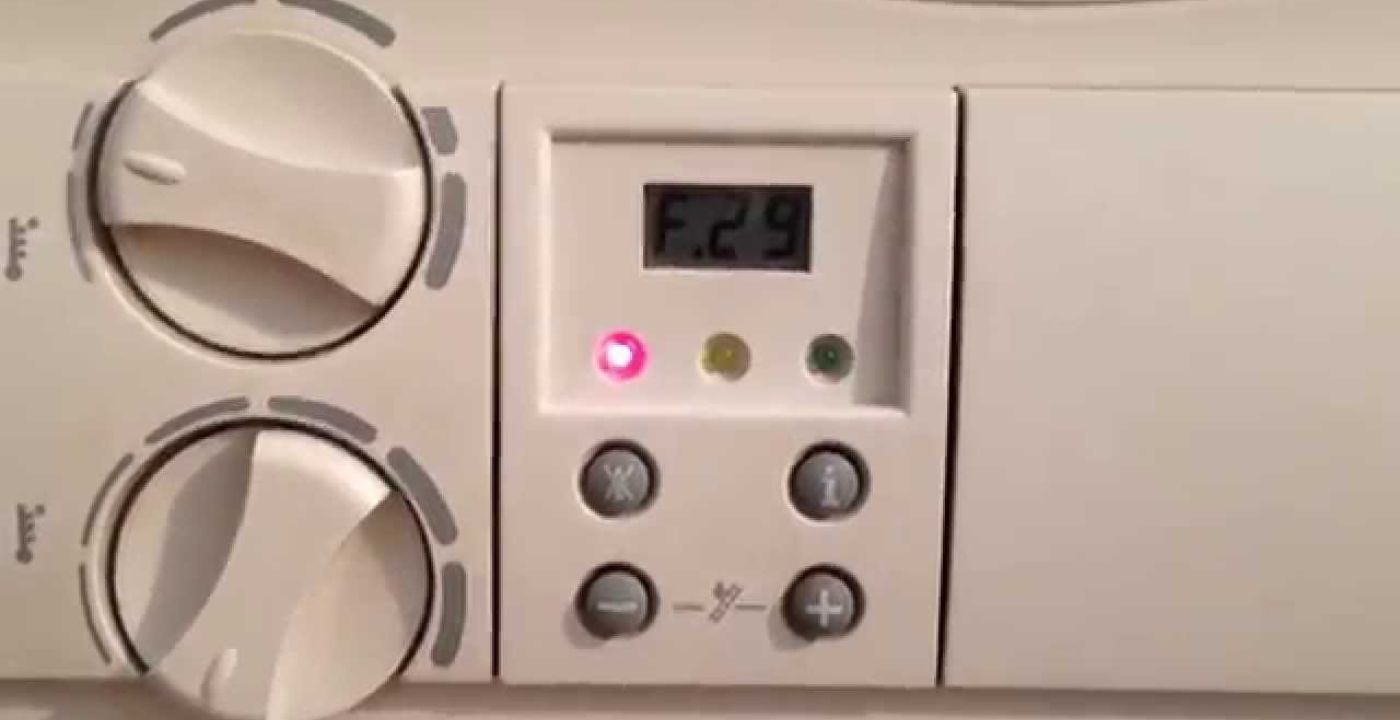
Several things could prevent your boiler from firing up and heating your home. Common Vaillant boiler problems that result in an F29 error include a lack of hot water or heat production. The red light on Vaillant boiler indicates that the burner inside the boiler isn’t lighting, which prevents hot water from running through the tap or the radiators.
Boilers may fail to fire up for a number of reasons, including debris in the burner, a frozen condensate pipe, defective flues or faulty electrodes. Your boiler may be back up and running in no time if the problem is found after a quick inspection.
Troubleshooting:
- Debris in the Burner – Dirt and debris can build up in the burner over time, making it impossible to fire up your boiler. An experienced boiler engineer can remove the obstruction, inspect the boiler for damage and replace the burner if necessary. However, routine maintenance on the boiler is the most effective way to avoid dirt accumulating.
- Malfunctioning Electrode or Lead Issues – Your Vaillant boiler’s electrodes or leads may eventually wear out and require replacement. Because they create the spark that ignites the boiler’s flame, these parts are crucial for its operation. Defective ones will prevent your boiler’s ignition system from working. Another explanation is that the system has an undetected leak responsible for the failures. A licensed gas systems engineer can evaluate the problem and make recommendations. You should never attempt to work out this issue on your own.
- Defective Flues – The white or black pipes protrude from the side or top of your house. Flues are installed on boilers to vent combustion byproducts safely outside of a building. An F29 error code is generated if the boiler locks out and the flame cannot be ignited due to an obstruction. Poor installation or a system clog are possible causes of the problem. If the flue isn’t installed correctly, then the fire could go out whenever there’s a gust of wind.
- Debris in the Burner – Dirt and debris can build up in the burner over time, making it impossible to fire up your boiler. An experienced boiler engineer can remove the obstruction, inspect the boiler for damage and replace the burner if necessary. However, routine maintenance on the boiler is the most effective way to avoid dirt accumulating.
- Malfunctioning Electrode or Lead Issues – Your Vaillant boiler’s electrodes or leads may eventually wear out and require replacement. Because they create the spark that ignites the boiler’s flame, these parts are crucial for its operation. Defective ones will prevent your boiler’s ignition system from working. Another explanation is that the system has an undetected leak responsible for the failures. A licensed gas systems engineer can evaluate the problem and make recommendations. You should never attempt to work out this issue on your own.
- Defective Flues – The white or black pipes protrude from the side or top of your house. Flues are installed on boilers to vent combustion byproducts safely outside of a building. An F29 error code is generated if the boiler locks out and the flame cannot be ignited due to an obstruction. Poor installation or a system clog are possible causes of the problem. If the flue isn’t installed correctly, then the fire could go out whenever there’s a gust of wind.
To fix a broken flue, you need a Gas-Safe engineer. Poor installation can be addressed by modifying or replacing the component. In addition, they can unblock the flue and restore safe gas flow once it has been clogged. The installation of a flue guard is another option for avoiding future obstructions.
- Frozen Condensate Line – A condensate line on every condensing boiler carries the boiler’s acidic waste water away from the property and into the sewerage system. Low temperatures threaten condensate pipes since they are often exposed to the elements and contain water.
Frozen condensate pipes become blocked, preventing water from exiting. To avoid major damage or flooding, the boiler shuts down automatically. You’ll need to defrost the condensate pipe to get your boiler working again once it has frozen shut. Pouring hot water (not boiling) over the frozen pipe will usually do the trick.
In all likelihood, however, resetting the boiler is required before its operation. Hiring a certified boiler engineer could make the process easier and reduce the associated risks. A frozen condensate line is the only boiler problem you should attempt to fix yourself; for all other issues, you should contact a professional boiler engineer.
3. Boiler Lockout
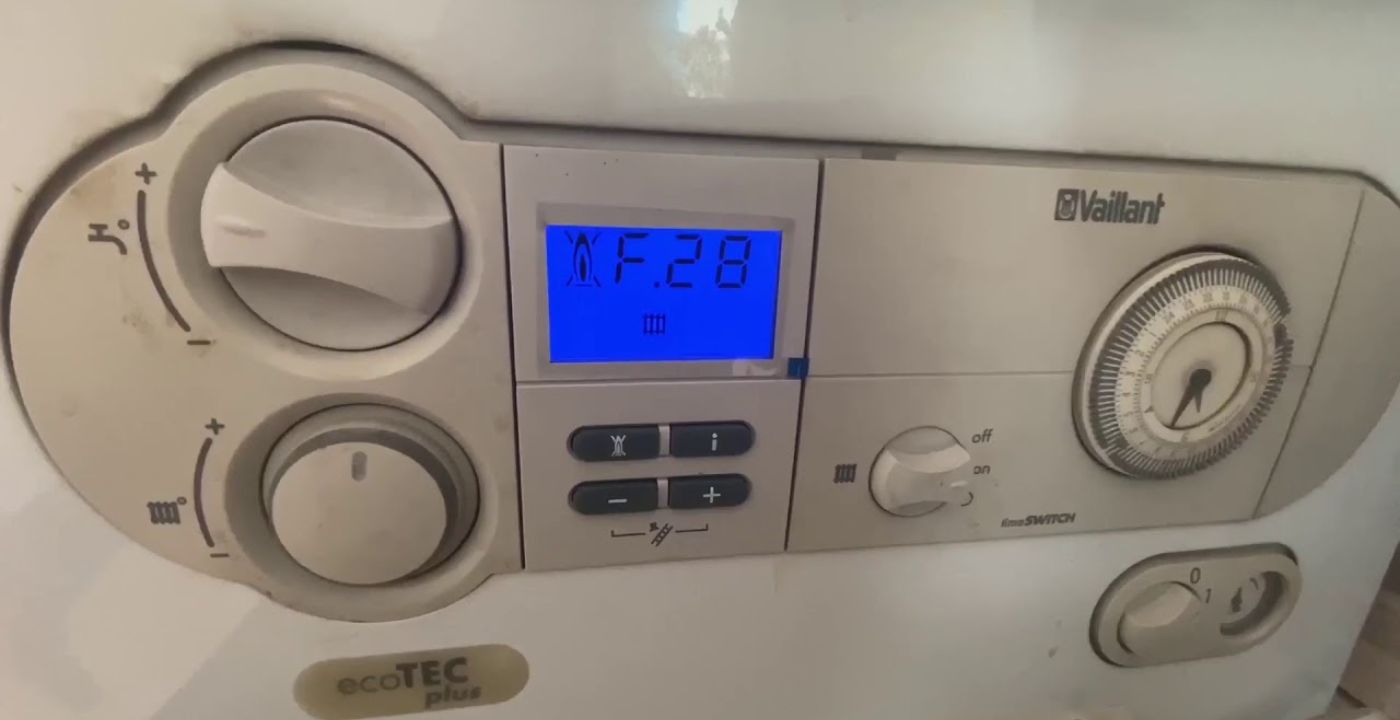
The symptoms of the F28 fault code on a Vaillant boiler are similar to those of the F29 fault code. In most cases, this error code will be displayed after you have experienced a boiler lockout, during which time you will not have access to any heating or hot water source. In most cases, it is brought on by a shortage or lack of gas supply.
Troubleshooting:
Because it involves gas, this is not something you should try to fix on your own. A Gas Engineer should be contacted at all times. You can test the gas supply using another gas device, like a stovetop, to see if the problem persists. To begin troubleshooting, a Gas Engineer can:
- Examine the air duct for leaks
- Analyse gas valve operation and adjustment settings
- Check the condition of the ignition leads
4. Leaking Boiler
Leaks in the boiler are a common problem. Leaks in a boiler can occur for various reasons, including corrosion in pipes or tanks, too much pressure in the boiler, worn seals, or broken parts. A broken boiler can lead to flooding and other water damage. However, if the leak reaches the electrical components next to the boiler, it could cause serious problems.
Troubleshooting:
You should be looking for places where water might leak out. Whenever you discover a leak, treat it as a major issue. If you find a leak, you should notify a professional engineer as soon as possible so that they can look into it. Do not try to take apart the boiler yourself.
5. Boiler Kettling
Kettling is a prevalent boiler issue. When water is heated to its boiling point too quickly, it creates steam and traps air, a phenomenon known as “boiler kettling.” The trapped air produces a whistle-like sound.
Troubleshooting:
Kettling can be fixed; however, the cost will vary depending on the degree of the problem. A qualified boiler engineer will be able to examine the system and determine the reason why the kettling is occurring. The problematic part can be cleaned in a number of ways; if that doesn’t work, it may be time to change the damaged boiler component.
6. Boiler Noises
The boiler can produce various unsettling sounds, including gurgling, humming or whooshing noises. Finding the cause of an unusual noise coming from your boiler is a top priority. The strange sounds could be anything from the air in the system to insufficient water pressure. Check for air in the pipes or radiators if you hear gurgling sounds. Whooshing can indicate a blocked intake, whilst a faulty pump can cause droning noises.
Troubleshooting:
You might try bleeding the radiator if your central heating system produces a lot of noise. Don’t forget to turn off the central heating system before you begin bleeding the radiators. Unusual sounds coming from the boiler typically do not indicate any serious problems. However, if the sounds persist then it’s worth consulting a boiler engineer.
How to Reset a Vaillant Boiler

The reset button is on the boiler’s display and will likely show a flame with a line crossed through it. However, the steps for resetting your Vaillant boiler may vary significantly from model to model. Therefore, it’s always best to consult the manual before resetting your boiler.
There’s no point in trying to reset the boiler until the underlying problem has been fixed. Inspect the boiler’s screen for the fault code, then go to the user guide to find its description and underlying causes. Problems that can’t be fixed easily by a homeowner should be checked by a Gas Safe Registered (GSR) engineer.
When you are sure the problem is solved, you can move on to the following steps:
- Locate the boiler’s reset button
- To reset, press and hold the reset button for 10 seconds.
- See if the pilot light is on or if the error message has cleared.
- Check the hot water or increase the thermostat to see if the boiler is operating.
Vaillant Boilers Common Error Codes
There are numerous Vaillant Boiler error codes; for your convenience, we have highlighted a few of the more common error codes and discussed their causes:
| ERROR CODE | DESCRIPTION |
|---|---|
| F22 | The pressure is too low, which can be remedied by opening the filling loop and allowing water to flow in until it reaches the desired 1.5. |
| F27 | Problems with the gas valve, the PCB, or the flame sensor could be to blame. An engineer can figure out what’s wrong, but if it’s the PCB, a new boiler might cost less to install. |
| F28 & F29 | Because of a lockout in the boiler, heat and hot water are unavailable. Possibly associated with the gas valve’s position, the ignition unit’s health, the ignition leads, or the air intake vent. |
| F75 | This error message is shown by a Vaillant ecoTEC Pro 28 that is having issues and indicates a problem with the heating pump, the pressure sensor, or both. Replacement components should solve the problem. |
| F62 | Possible causes include a clogged gas valve or a miscommunication between the PCB and the valve. An engineer will investigate and provide a diagnosis. |
| F20 | Overheating due to insufficient water pressure will cause this to appear. This should be rectified by opening the filling loop so the pressure level can be restored to 1.5. |
| F32 | This error code typically appears because of fan or flue problems. An engineer can unclog the flue or replace the fan if necessary. |
| F61 | This Vaillant error code is often caused by a broken gas valve. Unlike a poorly adjusted valve, this can be easily be replaced by a boiler engineer. |
| F63 | An engineer will need to use a multimeter to pinpoint the root cause of the F63 error code on the PCB. |
| F68 | This code is generated if the flame is persistently weak or keeps going out. An engineer can determine if the problem is a clogged flue, a broken fan or air pressure switch, or an improperly set gas valve. |
Vaillant Common Problems
The Valiant brand manufactures a wide selection of boiler types. The many models each have their own individual qualities. It’s possible, though, that some errors will show up. Therefore, we compiled this list of typical Vaillant issues to help you learn more about the brand and identify potential issues.
| Common Valiant Problems | Description |
|---|---|
| Vaillant Ecotec plus 831 problems | Common problem with this model is the F75 fault. This indicates a problem with the heating pump, the pressure sensor, or both. Replacement components should solve the problem. |
| Vaillant Ecotec pro 28 problems | Common problem with this model is the F75 fault. This indicates a problem with the heating pump, the pressure sensor, or both. Replacement components should solve the problem. |
| Vaillant Ecotec plus 832 problems | Common problem with this model is the F22 fault. This indicates The pressure is too low, which can be remedied by opening the filling loop and allowing water to flow in until it reaches the desired 1.5. |
| Vaillant Ecotec plus 637 problems | Common problem with this model is the F28 & F29. Because of a lockout in the boiler, heat and hot water are unavailable. Check the gas valve’s position, the ignition unit’s health, the ignition leads, or the air intake vent. |
| Vaillant Ecotec plus 415 problems | Common problem with this model is the F24. The code indicates a pump problem, such as a clogged, broken pump. It’s also possible that the airlock is broken, allowing air to leak into the boiler. |

